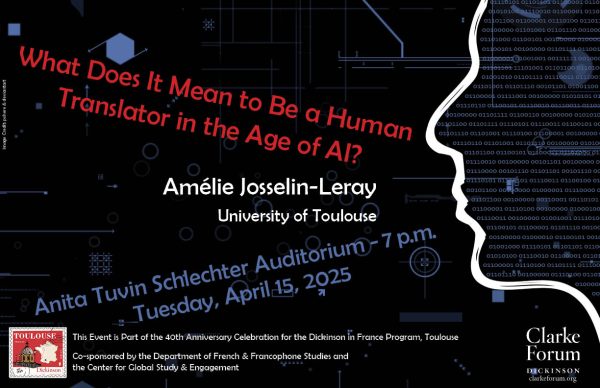A Call for a Class on Financial Literacy
As I begin my junior year here at Dickinson, I am still thinking with a “Make Dickinson Yours” mentality (I love the Dickinson Four initiative). I am really thinking of ways in which Dickinson can grow to help me, my peers and the Dickinsonians of the future.
Growing up in New York City, I was naturally interested and curious about what the heck was going on in all of those tall buildings that were taking up all of that space.
As an International Business & Management major and an Economics minor, I have learned a lot about financial institutions and their operations answering all the questions I had about New York City as a child.
During my past 2 years here, I have watched YouTube videos and read several books in my free time, in order to learn about investing strategies and how to achieve financial literacy.
During this past summer however, I wondered why such a great (and costly) institution like Dickinson does not offer a class on financial literacy.
Now, financial education is left out in the vast majority of schools across the nation. It is not like Dickinson is the only school to not have this type of education, but we have the opportunity to initiate a trend that is long overdue in this country.
As a Liberal arts institution, I believe it is our duty to teach our students how to BEST leverage what we learn here and reap the benefits financially as well.
While courses such as investments 101 or simply “Finance” are valuable, I am not referring to them. To be financially literate means to know the set of rules and skills when it comes to making and spending money.
This course should teach students things like credit card management, saving strategies, tax laws/loopholes, bank loans, leverage of any major to earn a livable income, financial plans for your personalized goals, usable investment vehicles and especially creating multiple streams of income and passive income.
I would love Dickinson to make this topic a course that any student can enroll in. I understand that Salt, a financial application created for college students, provides a lot of money management tips and other great resources, but I think this should exist as an actual course worth credit.
We pay approximately $6,200 for each credit we take, which is a lot of money. Why not use that money to become financially literate?
Learning these skills can literally multiply our earning potential once we graduate (talk about return on investment!).
Learning how to do these things and taking action on these lessons can make the sky the limit on how much you can earn.
An example of how a course like this can be useful is loans. Now, I understand that not everyone that goes to school here pays the tuition, (Thank you Posse!) but the cost of attending at Dickinson for four years is over $250,000 or a quarter of a million dollars!
This number will probably reach $300,000 very soon and we will need to be financially literate in order to pay back any loans that we have taken out or to pay back our parents (or to send our own kids to an institution like this one). Nevertheless, many of us will graduate and receive job offers (maybe not immediately but eventually) that will probably range between $35,000 and $100,000 per year.
While these may seem like very large sums of money, when you take into account the living costs that I mentioned earlier, loan payments and taxes, there is not much left over to enjoy and invest.
This course can teach us ways to create passive income so that we do not have to depend solely on a day job.
I really hope Dickinson can spearhead this movement of providing financial education to the next generation of professionals.



